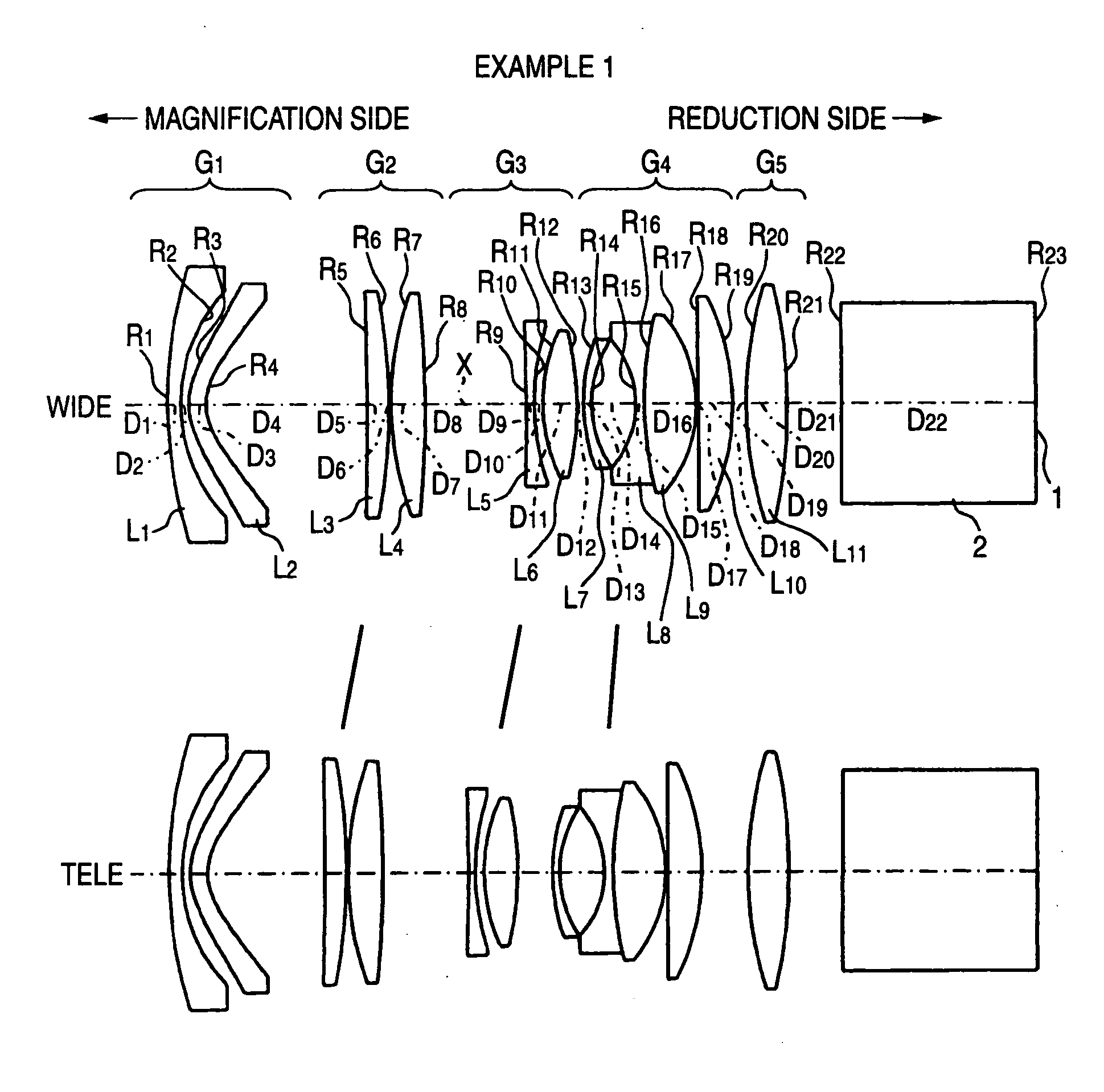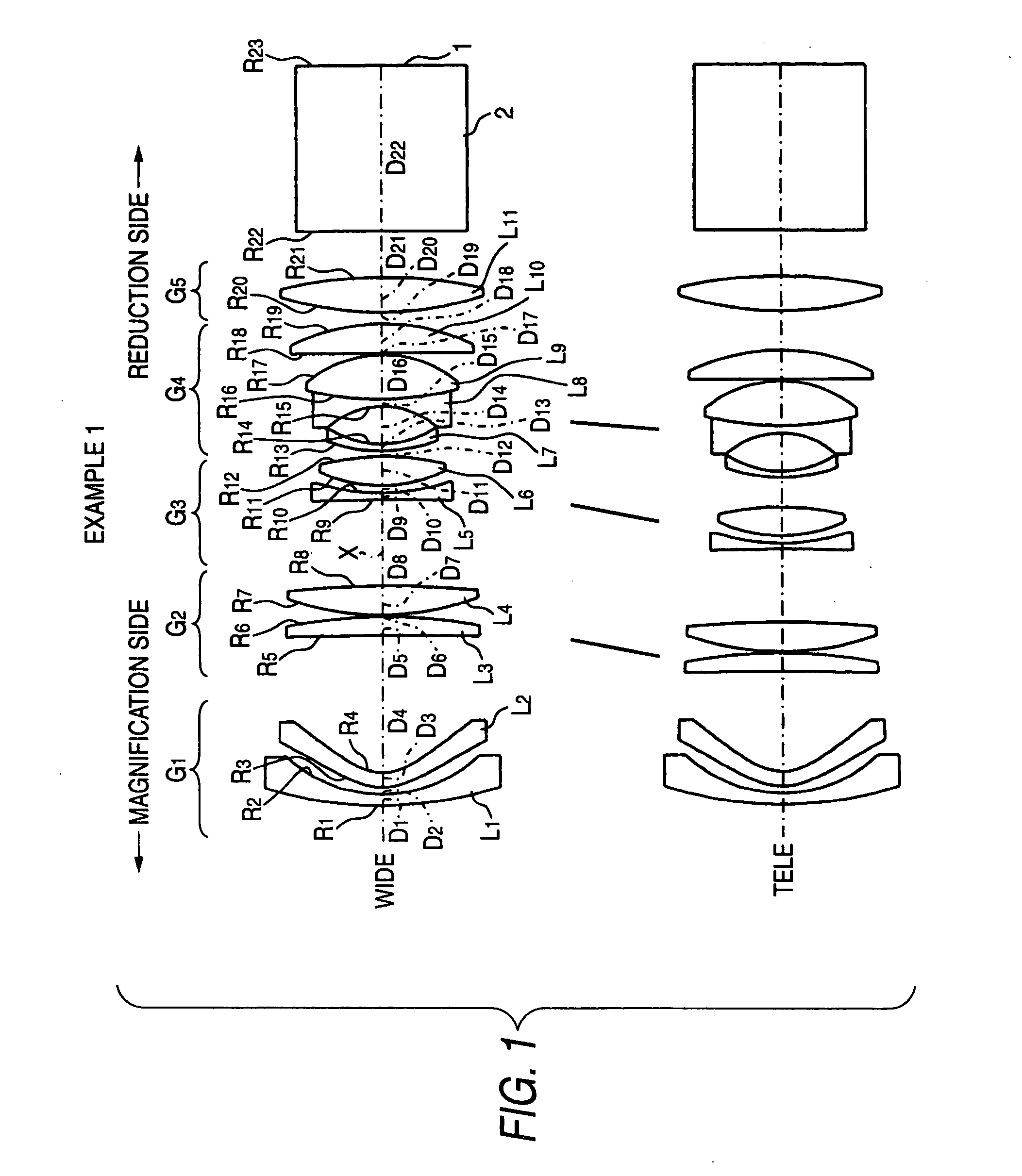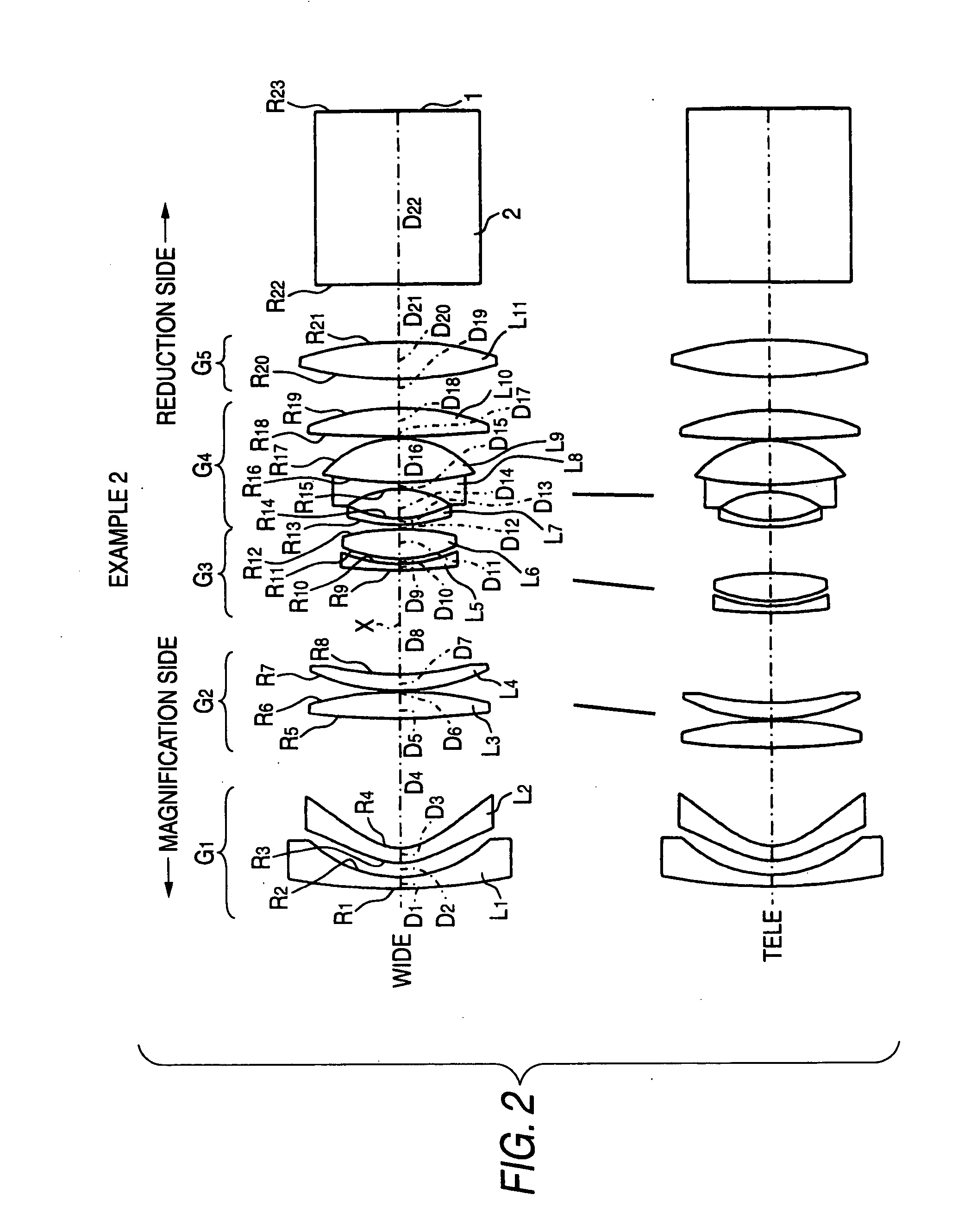Zoom lens and projection display device using the same
a technology of zoom lens and projection display device, which is applied in the field of image forming zoom lens, can solve the problems of lack of brightness, lack of improvement in distortion correction, etc., and achieve the effect of reducing weight, improving weather resistance, and satisfactorily adjusting
- Summary
- Abstract
- Description
- Claims
- Application Information
AI Technical Summary
Benefits of technology
Problems solved by technology
Method used
Image
Examples
example 1
[0061]The zoom lens according to this example 1 is configured as shown in FIG. 1, as described above. More particularly, this zoom lens is configured sequentially from the magnification side in such a way that the first lens group G1 includes the first lens L1 made of the negative meniscus lens whose convex surface is directed to the magnification side and the second lens L2 made of the negative meniscus lens whose convex surface is directed to the magnification side; the second lens group G2 includes the third lens L3 made of the positive meniscus lens whose convex surface is directed to the reduction side and the fourth lens L4 made of a biconvex lens; the third lens group G3 includes the fifth lens L5 made of a biconcave lens and the sixth lens L6 made of a biconvex lens; the fourth lens group G4 includes the cemented lens constructed formed by joining the seventh lens L7 made of the negative meniscus lens whose convex surface is directed to the magnification side, the eighth len...
example 2
[0068]FIG. 2 shows a schematic configuration of a zoom lens according to an example 2. The zoom lens of the example 2 is configured substantially similarly to that of the example 1. A major difference from the example 1 is that the third lens L3 is made of a biconvex lens, that the fourth lens L4 is made of a positive meniscus lens whose convex surface is directed to the magnification side, that the fifth lens L5 is made of a negative meniscus lens whose convex surface is directed to the magnification side, and that the tenth lens L10 is made of a biconvex lens.
[0069]In this example 2, radii R of curvature of the respective lens surfaces, center thicknesses of the respective lenses and air distances D between the respective lens, refractive indices Nd of the respective lenses with respect to d-line and Abbe numbers νd of the respective lenses with respective to d-line are given on the upper portion of a table 3.
[0070]Also, the distance D4 between the first lens group G1 and the seco...
example 3
[0075]FIG. 3 shows a schematic configuration of a zoom lens according to an example 3. The zoom lens according to the example 3 is configured substantially similarly to that according to the example 1, but is different from the example 1 mainly in that the fourth lens group G4 includes three lenses and the fifth lens group G5 includes two lenses. More particularly, this zoom lens is configured sequentially from the magnification side in such a way that the first lens group G1 includes the first lens L1 made of a negative meniscus lens whose convex surface is directed to the magnification side and the second lens L2 made of a negative meniscus lens whose convex surface is directed to the magnification side; the second lens group G2 includes the third lens L3 made of a biconvex lens and the fourth lens L4 made of a biconvex lens; the third lens group G3 includes the fifth lens L5 made of a biconcave lens and the sixth lens L6 made of a biconvex lens; the fourth lens group G4 includes ...
PUM
 Login to View More
Login to View More Abstract
Description
Claims
Application Information
 Login to View More
Login to View More - R&D
- Intellectual Property
- Life Sciences
- Materials
- Tech Scout
- Unparalleled Data Quality
- Higher Quality Content
- 60% Fewer Hallucinations
Browse by: Latest US Patents, China's latest patents, Technical Efficacy Thesaurus, Application Domain, Technology Topic, Popular Technical Reports.
© 2025 PatSnap. All rights reserved.Legal|Privacy policy|Modern Slavery Act Transparency Statement|Sitemap|About US| Contact US: help@patsnap.com



